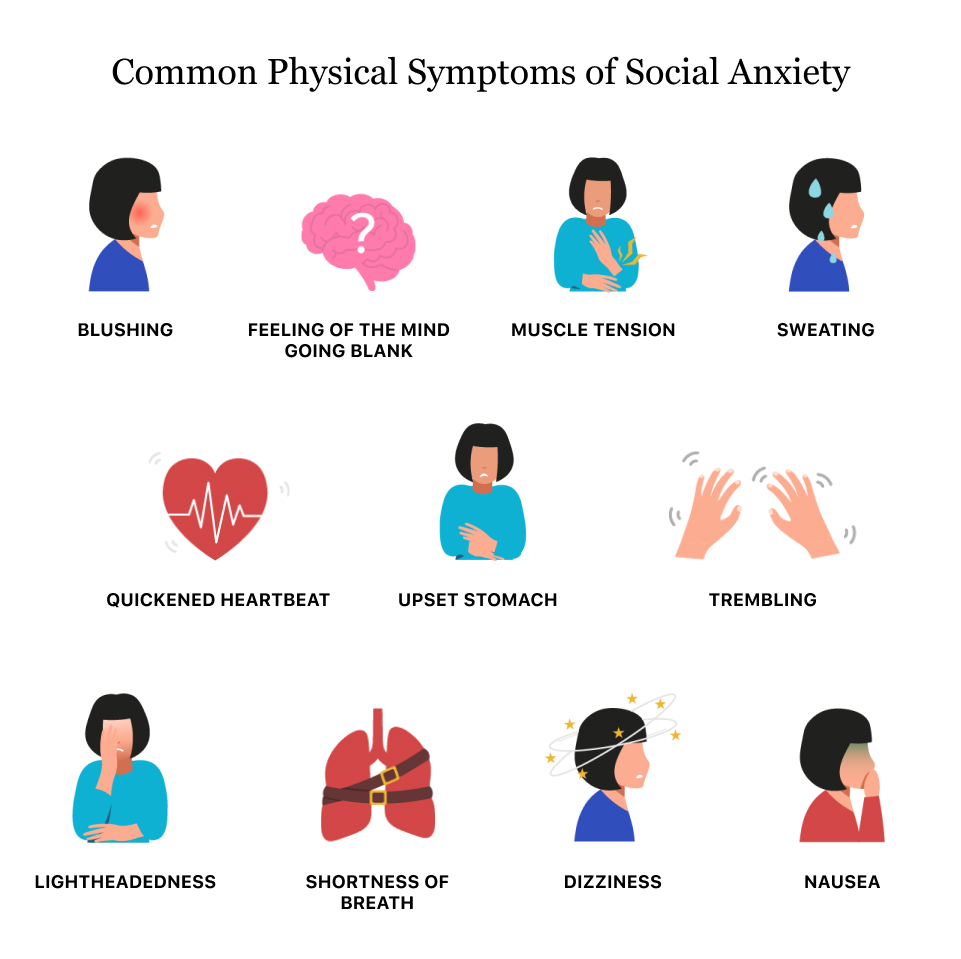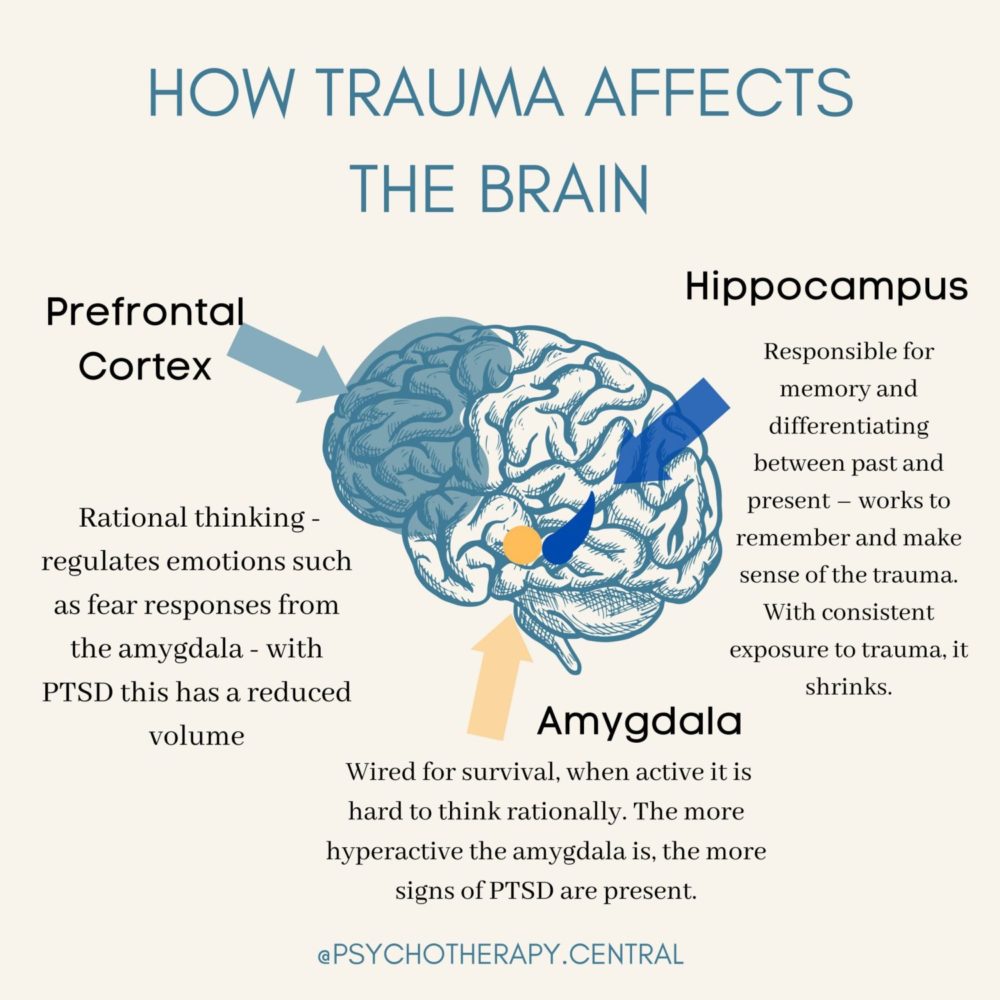Let’s delve into the topic of social anxiety—an experience that affects many individuals and can significantly impact their daily lives and overall well-being. Social anxiety is characterized by an intense fear of judgment, embarrassment, or negative evaluation in social situations. It can make even the simplest social interactions feel overwhelming, leading to avoidance and isolation. However, it’s important to remember that social anxiety is a common challenge, and with understanding and support, it can be overcome.
Here are some key points to help us better understand social anxiety and navigate its impact on our lives:
 Recognizing the Signs: Social anxiety can manifest in various ways, such as excessive self-consciousness, fear of scrutiny, avoidance of social situations, physical symptoms like racing heart or sweating, and a constant worry of saying or doing something embarrassing. By identifying these signs, we can begin to address them with compassion.
Recognizing the Signs: Social anxiety can manifest in various ways, such as excessive self-consciousness, fear of scrutiny, avoidance of social situations, physical symptoms like racing heart or sweating, and a constant worry of saying or doing something embarrassing. By identifying these signs, we can begin to address them with compassion.
 Challenging Negative Thoughts: Social anxiety often stems from negative thoughts and self-doubt. These thoughts may revolve around the fear of judgment, rejection, or being perceived as inadequate. By challenging and reframing these thoughts, we can break free from their grip and develop a more realistic and positive perspective of ourselves and social interactions.
Challenging Negative Thoughts: Social anxiety often stems from negative thoughts and self-doubt. These thoughts may revolve around the fear of judgment, rejection, or being perceived as inadequate. By challenging and reframing these thoughts, we can break free from their grip and develop a more realistic and positive perspective of ourselves and social interactions.
 Gradual Exposure and Practice: Facing our fears gradually and systematically is an effective way to overcome social anxiety. By exposing ourselves to social situations in a controlled and supportive manner, we can gradually build confidence, challenge our negative beliefs, and develop new coping strategies.
Gradual Exposure and Practice: Facing our fears gradually and systematically is an effective way to overcome social anxiety. By exposing ourselves to social situations in a controlled and supportive manner, we can gradually build confidence, challenge our negative beliefs, and develop new coping strategies.
 Seeking Support: Social anxiety can be challenging to overcome alone, so reaching out for support is crucial. Surrounding ourselves with understanding friends, family, or joining support groups can provide a sense of belonging and encouragement. Additionally, working with a therapist specializing in anxiety can offer valuable guidance and tools to manage social anxiety effectively.
Seeking Support: Social anxiety can be challenging to overcome alone, so reaching out for support is crucial. Surrounding ourselves with understanding friends, family, or joining support groups can provide a sense of belonging and encouragement. Additionally, working with a therapist specializing in anxiety can offer valuable guidance and tools to manage social anxiety effectively.
 Practicing Self-Care: Prioritizing self-care is essential when dealing with social anxiety. Engaging in activities that promote relaxation, such as exercise, mindfulness, or hobbies, can help reduce stress levels and enhance overall well-being. Taking care of our physical and mental health creates a foundation for resilience and confidence in social settings.
Practicing Self-Care: Prioritizing self-care is essential when dealing with social anxiety. Engaging in activities that promote relaxation, such as exercise, mindfulness, or hobbies, can help reduce stress levels and enhance overall well-being. Taking care of our physical and mental health creates a foundation for resilience and confidence in social settings.
Remember, social anxiety does not define who you are. By understanding its roots, challenging negative thoughts, seeking support, and practicing self-care, you can gradually overcome social anxiety and embrace your authentic self. Social connections and fulfilling relationships await you on the other side of fear. You are capable of thriving in social situations, and your unique qualities are worthy of celebration.
-Usman Sharif, MACP, R.C.C.



 It is often said that “Time heals all wounds,” but what about the wounds we cannot see? Today, I want to shed light on how trauma can silently shape our brains, and more importantly, how healing is possible.
It is often said that “Time heals all wounds,” but what about the wounds we cannot see? Today, I want to shed light on how trauma can silently shape our brains, and more importantly, how healing is possible. Trauma, whether it be from a single event or prolonged experiences, can have a profound impact on our mental well-being. It can rewire our brains, leaving lasting imprints on our thoughts, emotions, and behaviors. But here’s the important part: we don’t have to face it alone.
Trauma, whether it be from a single event or prolonged experiences, can have a profound impact on our mental well-being. It can rewire our brains, leaving lasting imprints on our thoughts, emotions, and behaviors. But here’s the important part: we don’t have to face it alone. As a counselor dedicated to helping individuals navigate their healing journeys, I’ve witnessed firsthand the power of therapy in rewiring those neural pathways. By offering a safe and non-judgmental space, we can work together to reclaim control over our minds, rebuild resilience, and foster lasting growth.
As a counselor dedicated to helping individuals navigate their healing journeys, I’ve witnessed firsthand the power of therapy in rewiring those neural pathways. By offering a safe and non-judgmental space, we can work together to reclaim control over our minds, rebuild resilience, and foster lasting growth. Let’s embark on this transformative journey together. Reach out today for a confidential consultation, and let’s rewrite the narrative of your life, one step at a time.
Let’s embark on this transformative journey together. Reach out today for a confidential consultation, and let’s rewrite the narrative of your life, one step at a time.

